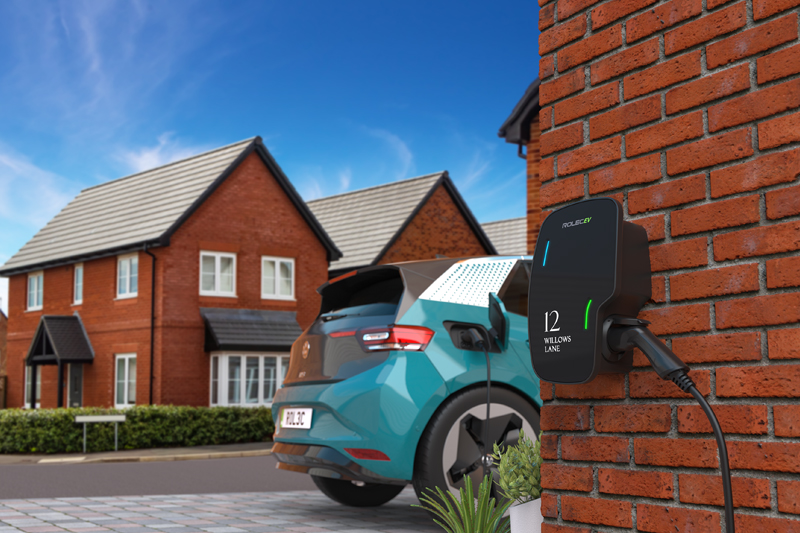
The government’s Part S regulations came into force in December of last year, but what does this mean for you and your customers? The team at Rolec EV sheds some light.
One of the newest developments in the UK government’s road to net zero has been the introduction of the Part S regulations. Aimed at making electric vehicle infrastructure more accessible and increase the appeal of EVs to promote better uptake, this ambitious plan accompanies the government’s transition to fully electric vehicles by 2030.
Minimum requirements for an electric vehicle charge point
Potentially the most intriguing section of the Part S regulation refers to the requirements for EV charge points. The government has outlined certain expectations for new EV technology to support this widespread installation, to maintain a certain level of quality throughout. This should also ensure that units are as future-proof as possible.
What do you need to look out for when choosing an EV charging solution?
Along with the recognised standard features of an EV charge point, such as a minimum power output of 7kW and a universal, untethered power socket, its also mandated that your unit must be ‘smart’.
Essentially, this means that it should be able to schedule charging during off-peak hours or when demand is at its lowest to reduce pressure on the national grid. The EV charge point should also have the capacity to measure, record and transmit usage in units of energy or time.
Other features to include are:
• A minimum of Mode 3 specialised system, running from a dedicated circuit, as specified in BS EN IEC 61851,
• Charging status indicator,
• Designed and installed as prescribed in BS 7671,
• Follows the requirements of the IET’s Code of Practice: Electric Vehicle Charging Equipment Installations.
Cable routes and locations for electric vehicle charge points
Part of the focus of the Part S regulations is on building supporting infrastructure for future EV charging development. This means that developers/builders will have to supply cable routes to all parking spaces that are capable of sustaining EV charge point installations in the future.
With this in mind, there’s a list of considerations when installing cable routes to help accurately locate potential future units, making yours and other future installers’ jobs easier.
Specified future connection locations must consider the following:
• Must be suitable for use by electric vehicles, even with charging inlets in different positions.
• At least one accessible parking space should have either an EV charge point or a cable route suitable to support the installation of one in the future.
• Units can be placed to provide access to more than one parking space, but cable routes should be suitable to sustain the charging capacity for such a unit.
• Must be in a suitable location to function correctly (especially if it has multiple sockets) – all charging sockets should be feasibly accessible. Don’t position a future unit backed against a wall if it is needed to supply charge from all sides, for example.
• Sufficient space for electrical connection to a metered supply.
• Cable should be supplied with a committed safe and unhindered route to a metered electricity supply.
• Don’t leave too little space for the future unit – there needs to be room not only for the unit to be situated but also a feasible amount of space for the actual install.
• You must specify a future connection location.
QUBEV Smart
Rolec EV meets all Smart Charge Point and Part S regulations across its range and the new QUBEV Smart is no exception. Universally compatible with all BEVs and PHEVs, solar compatible and fitted with an LED status indicator, the unit has all the features a home owner is looking for in a domestic EV charger.
It is also paired with a free Wi-Fi App that meets all the Smart Charge Point regulations: allowing users to schedule charging, view energy usage and receive live security alerts.
Get more details about Rolec’s QUBEV Smart EV Charger here










